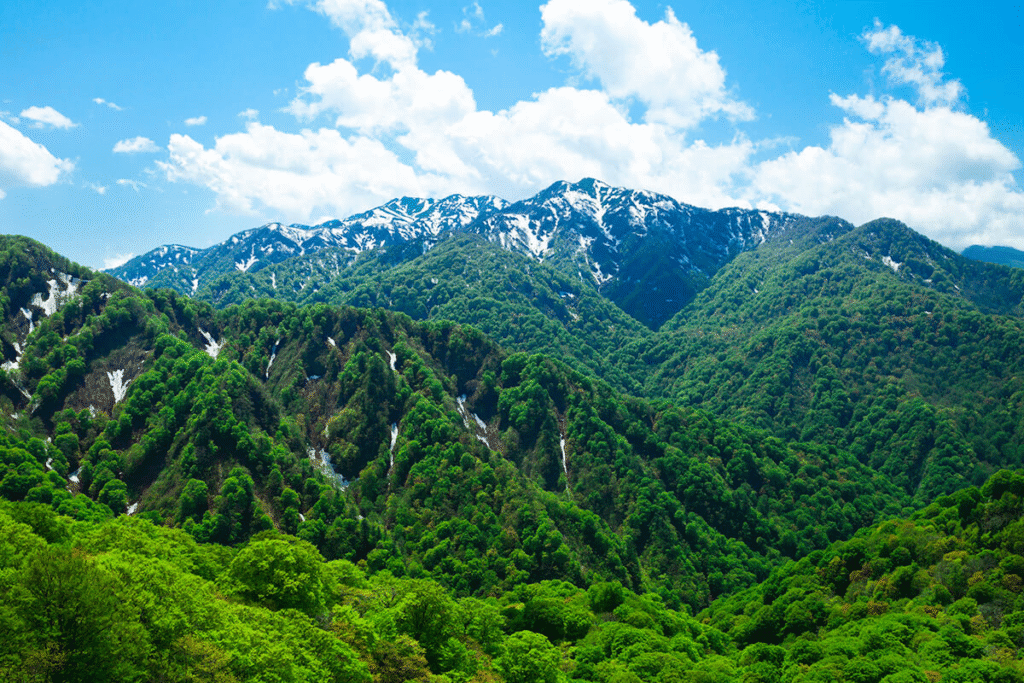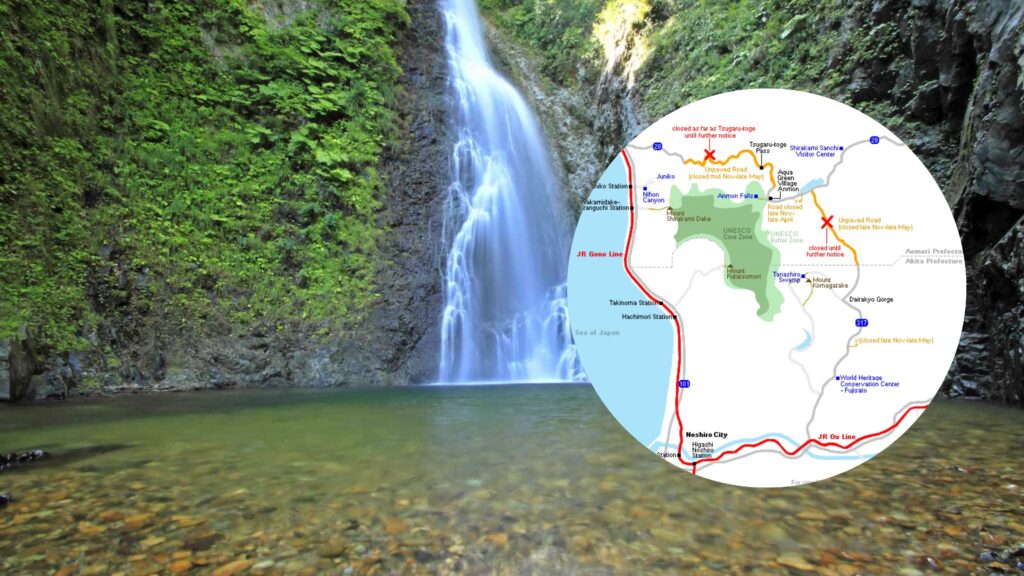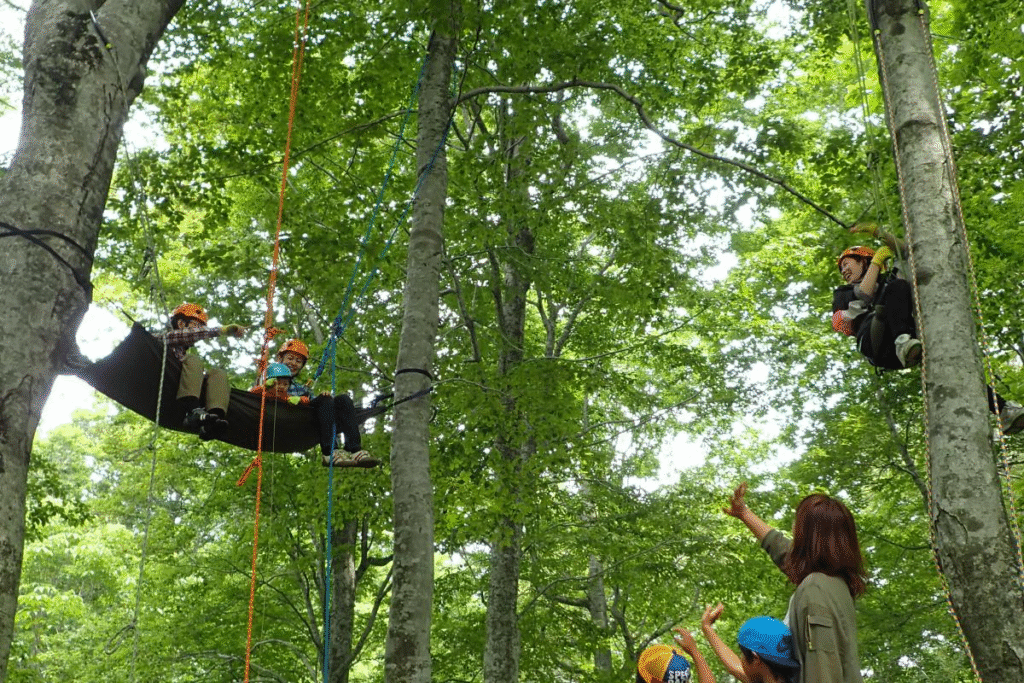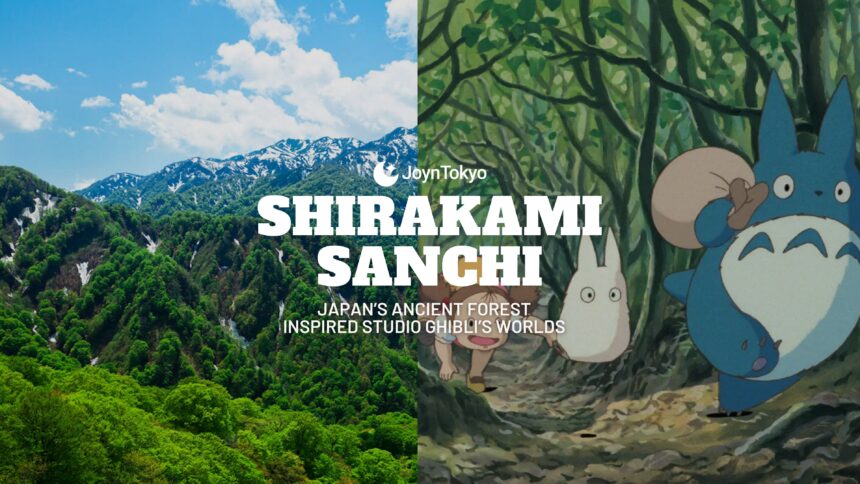When it comes to Japanese nature, almost everyone might immediately think of Mt. Fuji and the surrounding Fuji Five Lakes, or perhaps the snowcapped Japanese Alps, or the forests around Kyoto. But they may also think longingly of the sort of forests they saw in Studio Ghibli’s 1997 film Princess Mononoke (もののけ姫). It’s too bad that such a place doesn’t exist in real life, right? Right?
Well, not exactly. Straddling Akita and Aomori prefectures lies the forested and mountainous Shirakami Sanchi, a favorite destination for anyone looking to not just return to nature, but to find the a definitive specimen of it. JoynTokyo was lucky enough to join a briefing on the location on October 7 sponsored by the Japan National Tourism Organization (JNTO), so let us explain why, with a forest older than the Japanese imperial line, Shirakami Sanchi will leave you with memories to last a lifetime.
What Is Shirakami Sanchi?

Shirakami Sanchi (白神山地; lit. “White Mountain Gods”) is a virgin beech forest, meaning that it is one that has been largely undisturbed by human activity since its origins over 8,000 years ago. The entire region of Shirakami Sanchi covers over 500 square miles, with approximately 65 square miles of this has been designated as a UNESCO World Heritage Site.
Due to its pristine condition, without having been subjected to the deforestation that many similar areas of natural beauty in the world have been, to this day Shirakami Sanchi has an ethereal, almost otherworldly beauty to it.
“It is the perfect place for forest bathing,” says Yuzuru Hata, an official with Akita Shirakami Tourism. “Much of the forest is unchanged since the Jomon era [14,000 – 300BCE].”
Where Is Shirakami Sanchi (how to get there from Tokyo)?

As mentioned, Shirakami Sanchi lies across both Akita and Aomori prefectures in the northern region of Tohoku. Although it is somewhat distant from Tokyo, it doesn’t take an especially long time to arrive there. By taking a plane and then the train, one can leave Haneda and arrive at Higashi-Noshiro Station in around two hours of total travel time (but leave some extra time for leaving the airport).
Once you have arrived, there are many hotels and onsen you can stay at, including the Noshiro Town Hotel Minami, Hotel New Green Noshiro, and the traditional inn Yurakunoyado Noshiro.
Best Sights and Hiking in Shirakami Sanchi

With so much beauty in the area, where are the best places to go, and the best sights to see? Hata recommends beech forest trekking in Dakedai Forest, known for an enormous 400-year-old beech tree. The trek is about one hour in duration and easy even for beginners. Tomeyama Forest is of similar difficulty, but lies within the mountains, and requires a guide to visit.
One of the most breathtaking places to visit and experience the beauty of Shirakami Sanchi is in the area of the Juniko Lakes. Although it is literally referring to “twelve lakes” (named so because, centuries ago, 12 should be seen from the peak of Mt. Kuzure), there are actually 33 beautiful lakes. The two most famous are Aoike (”Blue Pond”) and Wakitsubo Pond, which can both be visited in a 45-minute walking loop. The waters are so blue and so clear, you can even see fish swimming at the bottom when the sun hits just right.
Another exquisite piece of natural beauty are the Anmon Falls. This area is ideal for an autumn hike, and takes roughly one hour to complete (though to arrive at the falls will take roughly one hour either way by public transport from Hirosaki Station). An enjoyable climb to see three gorgeous falls, it reminds hikers why they fell in love with their hobby in the first place.
It is no surprise that these forests and lakes are a favorite among Studio Ghibli fans. When you’re there, you can almost imagine Kodama walking around the quiet woods, and can see exactly why the titular Princess Mononoke wanted to protect such a beautiful and sacred place.
Activities in Shirakami Sanchi

Besides hiking and forest bathing, Shirakami Sanchi offers a number of other exciting activities. These include aquatic activities, such as river trekking (known as “sawa aruki/沢歩き), where you will wrap straw around your shoes — make sure it’s a pair you can get wet! — and go walking through clear waters along the the edge of the mountains.
If you prefer, however, you can also go kayaking. Taking a winding river course through areas considered spiritual, including paddling past an ancient shrine.
Beyond the water, you can forage for vegetables — all guided by locals — who will tell you where to find them, what to take, and later, cook and share your finds with others.
In the nearby area, you can also have an Akita dog experience and walk the cuties indigenous to the area. Or, if you prefer, visit Noshiro city’s Kyoshoji temple, where you can try Kyudo, Japanese archery. There is so much to do in Shiramaki Sanchi, it could take one another 8,000 years just to try it all!
Once again, we’d like to thank JNTO and Akita Shirakami Tourism for their exceptional introduction to this serene, incomparable part of Japanese history and nature. We hope we’ll see you taking a well-earned break from the hustle and bustle of modern life at Shirakami Sanchi soon.







